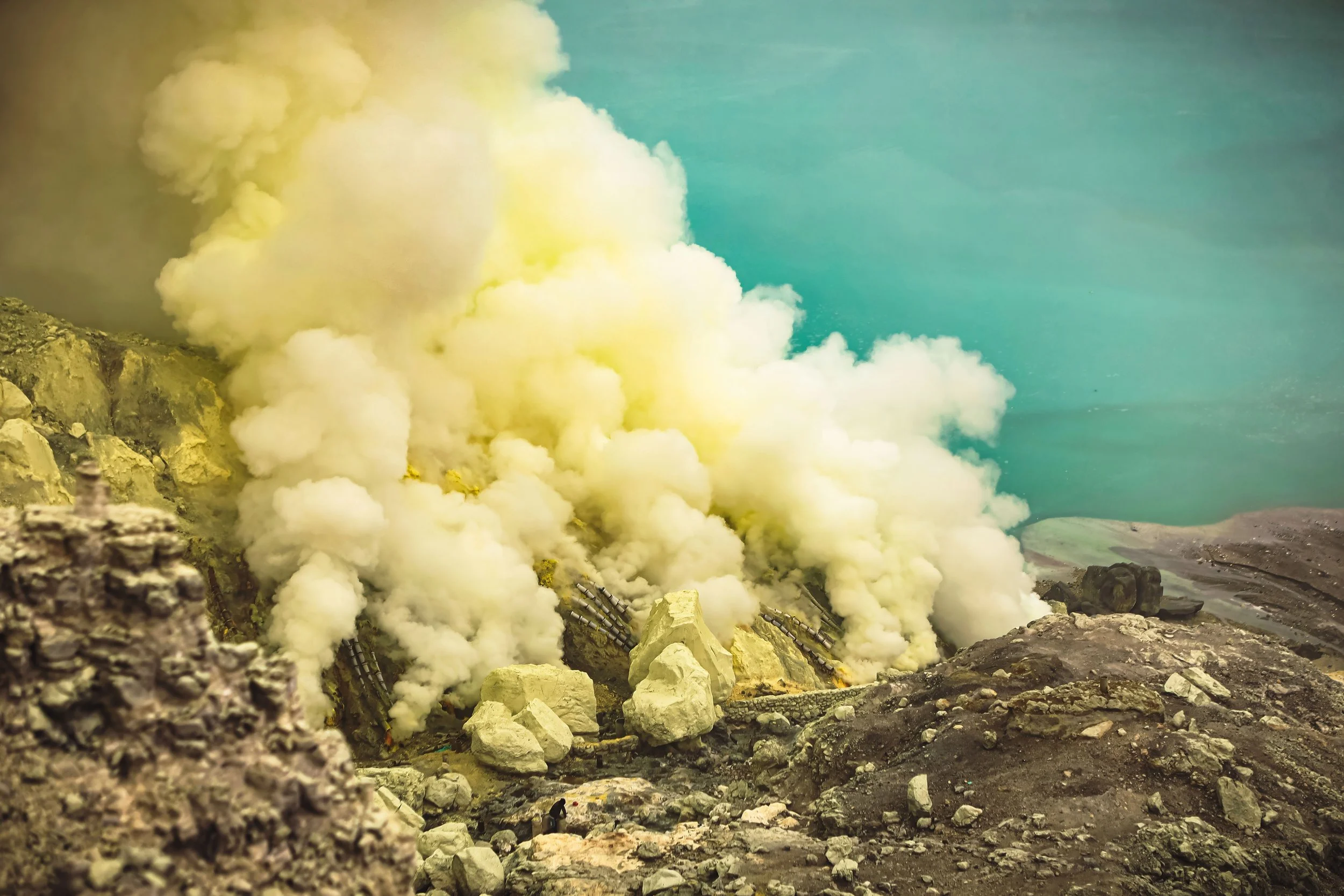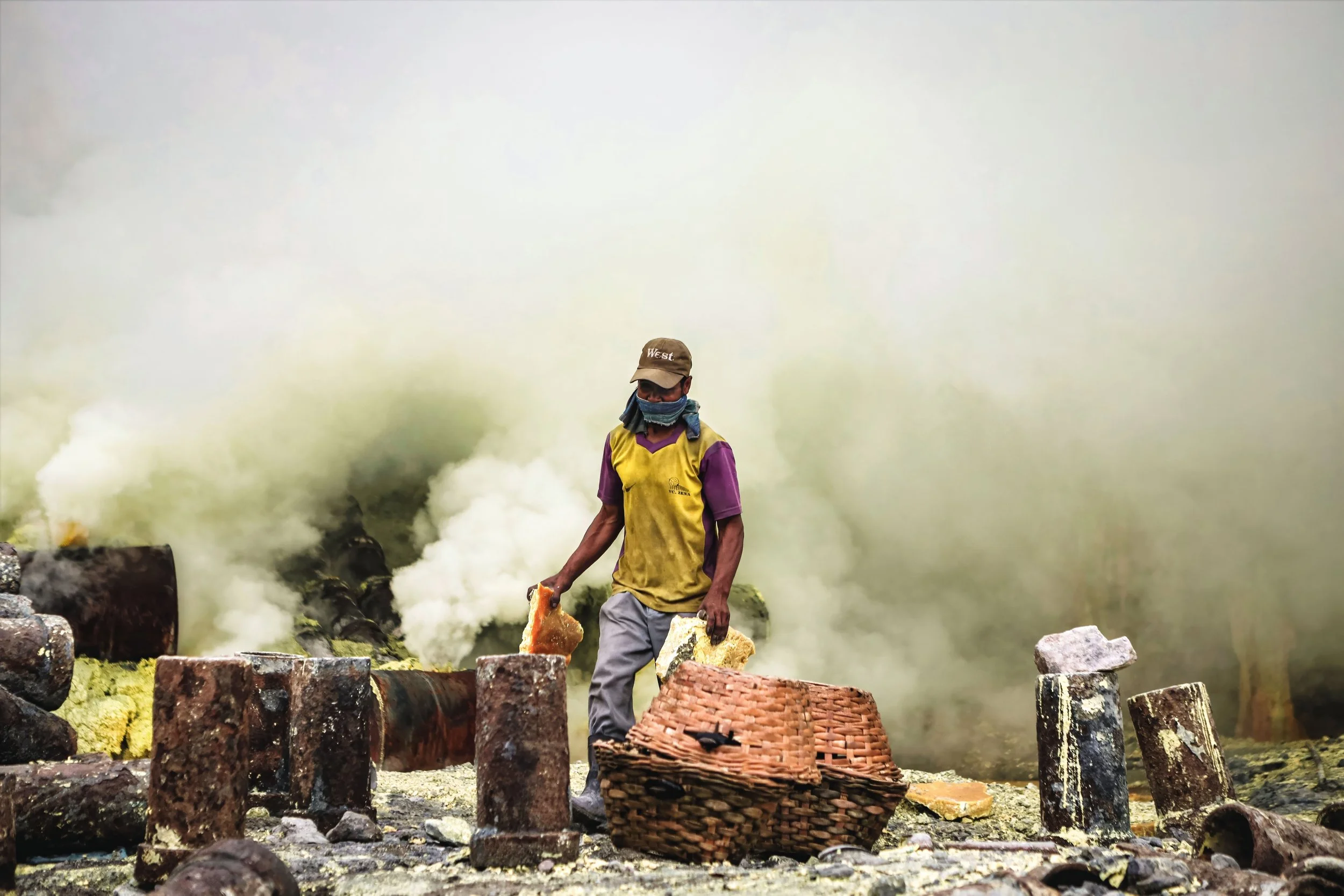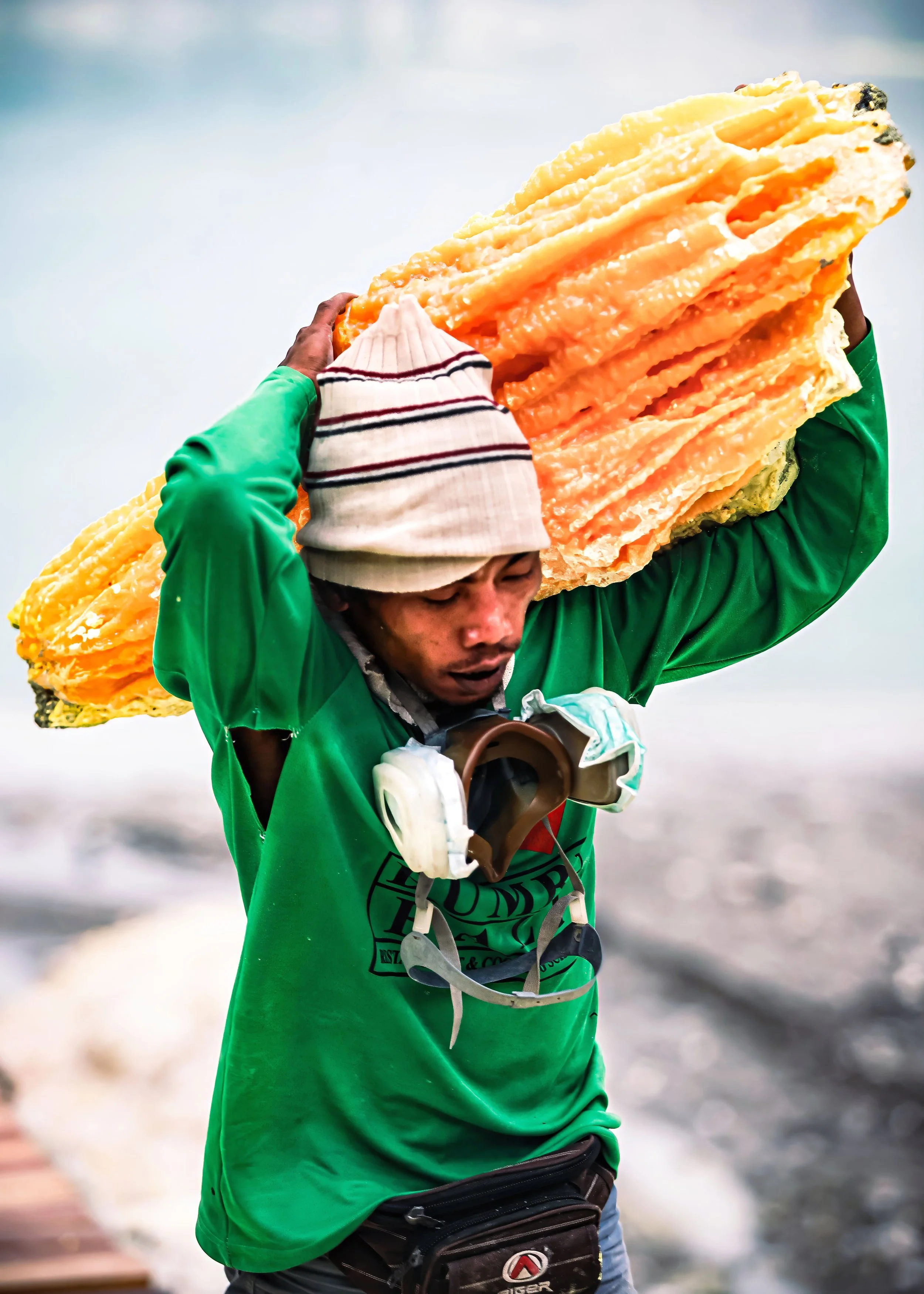KAWAH IJEN, JAVA, INDONESIA 2018
Kawah Ijen: The Harsh Reality Behind East Java's Sulfur Miners
Kawah Ijen, one of the many volcanoes that shape the landscape of East Java, stands apart from the rest. It is home to the world's largest acidic crater lake, a surreal turquoise body of water that belies the harsh conditions surrounding it. The lake's shores are rich in elemental sulfur, which 350-400 miners quarry manually each year—a practice that has become almost extinct in the modern world.
Unlike other sulfur operations where the element is a by-product of oil refining, Kawah Ijen is the last stronghold of labor-intensive sulfur mining. Here, miners earn their living amid toxic sulfur fumes that pose a significant risk to their health. Each day, these miners undertake an arduous journey, descending from the crater’s rim down to the lake, where they load 70-90 kilograms of sulfur into bamboo baskets. The climb back up is a nearly vertical ascent, followed by a 5-kilometer trek down to the road. For this grueling double trip, miners earn approximately 12 USD.
The conditions in which these miners work are extreme. They labor amidst noxious clouds of hydrogen sulfide and sulfur dioxide, often with little or no protective gear. The result is a devastatingly short average life expectancy of just 35 years. In the last four decades, around seventy miners have lost their lives due to sudden outbursts of poisonous gases in the crater.
Kawah Ijen is a place of striking beauty and brutal reality—a testament to both the resilience of the human spirit and the harshness of the natural world.













